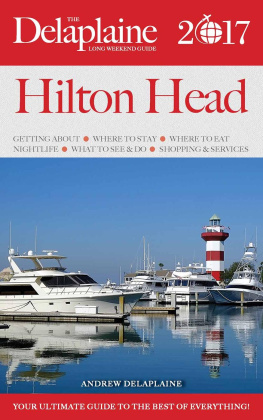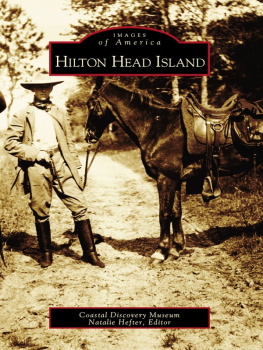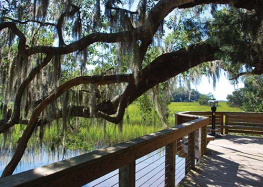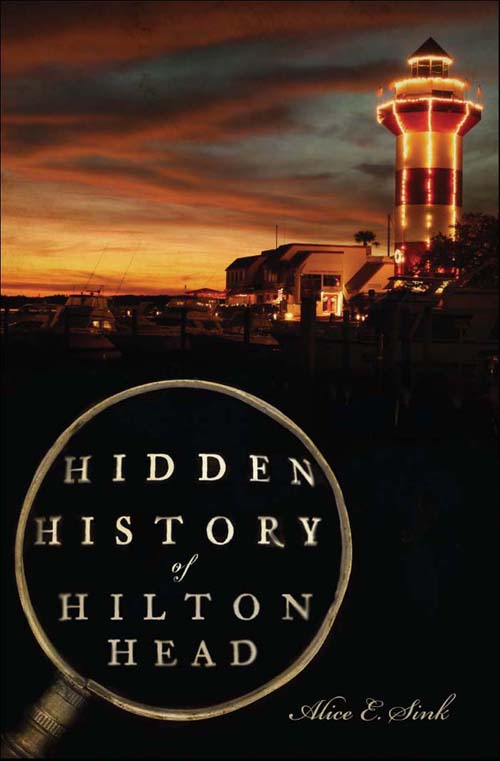P RAISE FOR A LICE S INKS W RITING
Sink has taken her memories and channeled them into five years of research and writing that resulted in herbook The Grit Behind the Miracle, which chronicles the true story of the Infantile Paralysis Hospital that was built in 54 hours in 1944.
Jill Doss-Raines, Lexington Dispatch
Throughout the rare glimpses from 1900 to around the early 1950s, Sink stuck to one consistent theme in Kernersville. Sink portrayedthe sense of community.
Brandon Keel, Kernersville News
Boarding House Reach reminds us of one of the most important truths of life: There are no ordinary people! Every story here is fascinatingand every one importantly belongs to history.
Fred Chappell
Community abounds in a colorful new book about the history of North Carolina boarding housesa travelers guide to a lost place that was smalltown and worldly at the same time.
Lorraine Ahearn, Greensboro News & Record
A very highly recommended addition for academic and community library collections, Boarding House Reach could serve as a template for similar studies for other states.
Midwest Book Review
Hidden History of the Piedmont Triad recounts a number of interesting stories from throughout the Triadfrom historic people and places to lesser-known colorful slices of life.
Jimmy Tomlin, High Point Enterprise
[In Hidden History of the Piedmont Triad] Sink writes about Lexingtons downtown dime stores. She describes how each counter was like a different department of the store, with a candy counter and comic book section popular with childrenand makeup counters that carried old-fashioned items such as Tangee lipstick and Evening in Paris perfume.
Vikki Broughton Hodges, Dispatch
Did you know that a nightclub in High Point once hosted the likes of Ella Fitzgerald and Duke Ellington? Have you heard the story of Lexington native John Andrew Roman, put to death on circumstantial evidence, or the local World War II fighter plane pilot who flew eighty-two missions to prevent German fighters from attacking American bombers? These are but three of the many little-known storiesfound in Hidden History of the Piedmont Triad.
Arbor Lamplighter
[Hidden History of the Piedmont Triad]covers people, places and events that have been forgotten.
Ryan Gay, lifestyles editor, Kernersville News
In Hidden History of the Piedmont Triad, author Alice Sink rediscovers the quirky stories of the Piedmont Triadtying North Carolina into the rest of world history.
Our State Magazine
HIDDEN
HISTORY
of
HILTON
HEAD
Alice E. Sink

Published by The History Press
Charleston, SC 29403
www.historypress.net
Copyright 2010 by Alice E. Sink
All rights reserved
Cover image: Painted Harbor by Jason Kravitz
All images are courtesy of the Library of Congress.
First published 2010
e-book edition 2011
ISBN 978.1.61423.147.9
Library of Congress Cataloging-in-Publication Data
Sink, Alice E.
Hidden history of Hilton Head / Alice E. Sink.
p. cm.
Includes bibliographical references.
print edition ISBN 978-1-59629-848-4
1. Hilton Head Island (S.C.)History. 2. Hilton Head Island (S.C.)Social life and
customs. 3. Hilton Head Island (S.C.)Biography. I. Title.
F277.B3S56 2010
975.799dc22
2010007818
Notice: The information in this book is true and complete to the best of our knowledge. It is
offered without guarantee on the part of the author or The History Press. The author and
The History Press disclaim all liability in connection with the use of this book.
All rights reserved. No part of this book may be reproduced or transmitted in any form
whatsoever without prior written permission from the publisher except in the case of brief
quotations embodied in critical articles and reviews.
For Sarah, my best-est friend in the whole wide world since our
kindergarten days together many, many moons ago!
C ONTENTS
Singing Songs of Protest and Worship
P REFACE
Many fine books have been written about Hilton Head Island, South Carolina. The formats of these volumes differ. Many texts follow some type of chronological order, beginning with geologic formation and prehistory facts and moving to modern times. Some are composed of both text and pictures, while others rely heavily on particular themes, such as plantation life, archeological discoveries and servant-slave issues. All are interesting and informative.
This book, Hidden History of Hilton Head, is different. It is not written in chronological order; instead, it includes bits of this and tads of thatmostly social history focusing on people, life ways, believe-it-or-not snippets and places. The word hidden has no derogatory or sinister undertone. These stories come from various sources, including interviews and research, and hopefully illuminate heretofore-unknown truths.
Interestingly, Hilton Head has been known as both Port Royal and Trenchs Island, so direct quotations in this book will move from one name to the other. Spellings also differ, the most prevalent example being Lowcountry, Low Country and lowcountry. In addition, when early communities or military installations change names, I attempt to clarify these inconsistencies.
The Library of Congress images add an important visual dimension to the different true stories in this book. I chose these carefully, matching them with specifics in the text. Occasionally, however, there will be what I call generic scenes, and I admit that I did take a few minor liberties. For example, a picture of a cotton field may not have been labeled for a specific and exact location, but I believe that Lowcountry cotton fields, slave cabins and lagoons cannot differ that greatly, and I have seen enough of each to argue that point!
A CKNOWLEDGEMENTS AND C ONTRIBUTORS
Thank you to the Gang at Hilton Head for your friendship, true stories and ongoing support. You are the inspiration behind this book because you helped me better understand and appreciate the uniqueness of the history of this wonderful island.
To Leslie and George, Joan and Tony, Rose and Mike and Elizabethour Lawton Woods, Hilton Head Island neighbors and friends.
To Peggy and Mike, Marcia, Tara, D.D. Sue and Bill, Roxanne, Sue and Larry, Su-Su and Tony, Jacob, Jan and Ed, Barbara and John, Jean and Jim, Patsy and Bill, Jeff, Gail and Jack, Sunburn Merry and Scottiethe Beach Club regulars. And also to Liz, Kenny and Kristenthe Beach Club staff who put up with all our nonsense.
To Doe Wolfe, my surrogate mother, who opens her Hilton Head home, heart and memories to me, and Ethelyn Spencer, who has always kept me informed about who was doing what on the island.
To Richard Pattisall Jr., longtime resident, who gives me great leads about what happened when on the island. I appreciate your friendship and your moral support.
To Laura All, my editor at The History Press, who gave me guidance and answered all of my questions. Also, to Katie Parry, my publicist at The History Press, who continues to arrange presentations and book signings.
To the Beaufort County (Hilton Head) Library staff, who found for me valuable sources for the writing of this book; and the High Point University Smith Library staffDavid, Mike, Nita and Stephaniewho answered all of my questions concerning copyright, Library of Congress pictures, downloading images and anything and everything I asked of them. I appreciate your interest and your help.











